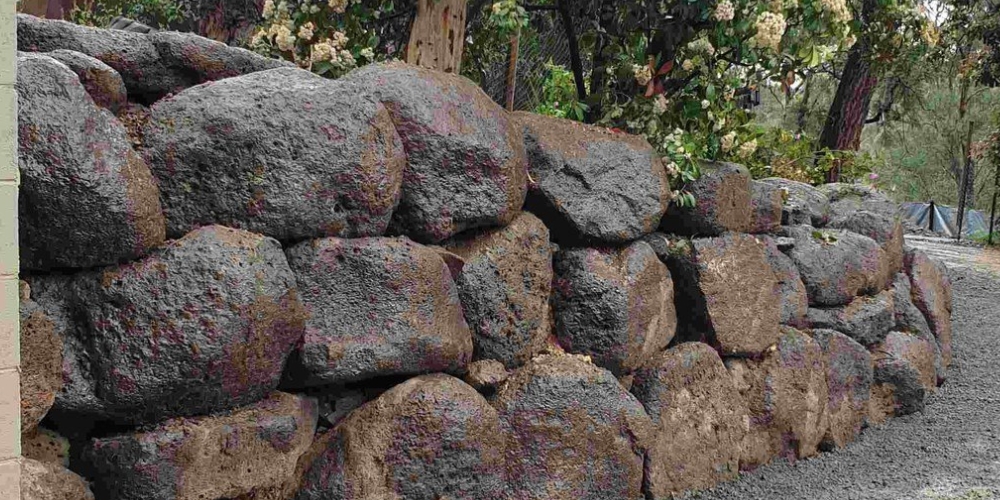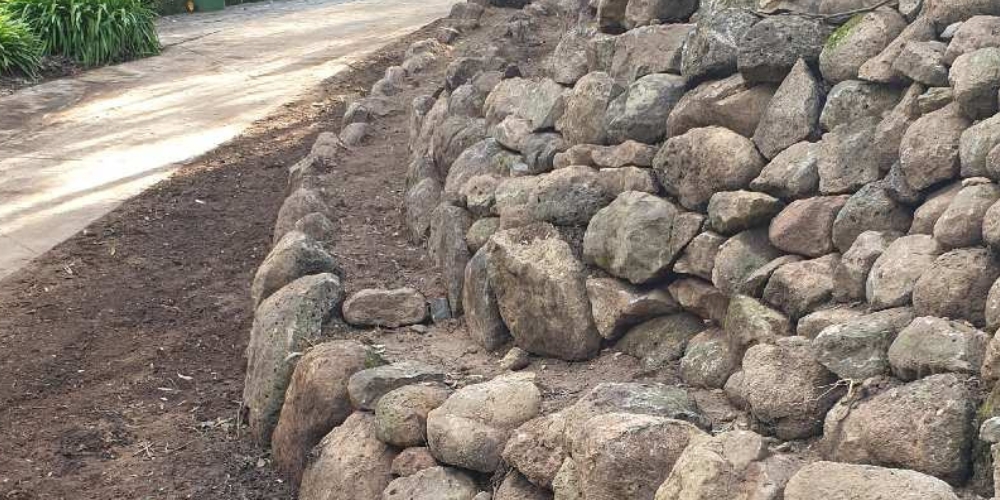The Dos and Don’ts of DIY Retaining Wall Projects: Insider Tips from Experts
You might wonder, “What’s the big deal about retaining walls anyway?” Well, let me tell you – they’re not just about holding back soil. Retaining walls can define your landscape, create usable space on sloping terrain, and prevent erosion.
Here in Melbourne, where our soil can be as diverse as our coffee options, choosing the right materials and construction techniques is crucial. Each soil type, from clay to sandstone, has challenges and considerations.
That’s what keeps things interesting, right?
So, whether you’re planning to spruce up your backyard, terrace a sloping landscape, or shore up a garden bed, I’ve got the dos and don’ts that’ll help you avoid the common pitfalls and ensure your retaining wall project goes off without a hitch.

The Dos of DIY Retaining Walls:
Do plan thoroughly
Before you begin any building, carefully design your retaining wall project. Consider the wall’s height, soil type, drainage needs, and any applicable permits. A well-thought-out strategy will position you for success and help you avoid costly mistakes later.
Do choose quality materials
Invest in high-quality materials that meet the specific needs of your project. This comprises durable retaining wall blocks, appropriate drainage components, and high-quality backfill materials. Using inferior materials can lead to a less durable and solid retaining wall.
Do prepare the site properly
Proper site preparation is critical to the success of your retaining wall installation. Clear the area of vegetation, level the ground, and provide appropriate drainage to provide a strong foundation for your wall. Ignoring appropriate site preparation can result in concerns like settling or instability.
Do follow the manufacturer's instructions
If you’re utilising pre-made retaining wall bricks or materials, follow the manufacturer’s directions exactly. This will ensure correct installation and prevent typical issues. Skipping steps or improvising can jeopardise the structural integrity of the wall.
Do compact backfill material
Backfill materials behind the retaining wall should be properly compacted to minimise settling and maintain stability. We use a compactor or manual tamper to reach the necessary level of compaction. Compacting the backfill is critical to maintaining the wall’s structural integrity over time.
Do provide proper drainage
This is very important. We include suitable drainage methods in our retaining wall design to avoid water buildup behind the wall. This could include gravel backfill, weep holes, or drainage pipes. Adequate drainage will help to reduce hydrostatic pressure and the likelihood of wall failure.
Do consider reinforcement:
Consider adding reinforcement to your retaining wall based on height and load-bearing needs. Reinforcement can improve the stability and endurance of a wall, particularly higher walls or those sustaining large loads.
Do take safety precautions
Ensure safety during the construction process. Wear proper personal protection equipment (PPE), exercise caution when using tools and machines, and adhere to safe work procedures. Taking safety precautions will help to avoid accidents and injuries during the job.
The Don'ts of DIY Retaining Walls:
Do not ignore soil composition
Different types of soil have unique properties that can impact the stability of your retaining wall. Remember to appreciate the value of understanding the soil makeup on your property. If necessary, conduct soil testing and adjust your design and building processes.
Do not underestimate environmental factors
Construction of retaining walls in Melbourne might be difficult due to the weather and environmental factors. Consider excessive rainfall, temperature swings, and possibly earthquake activity. Include methods to reduce these dangers, such as good drainage, frost protection, or strengthening.
Do not rush the construction process
Building a retaining wall is a major task requiring meticulous attention to detail. Refrain from speeding the construction process or attempting to save time by cutting corners. Take your time and do it correctly the first time to avoid costly repairs or breakdowns later on.
Be aware of maintenance needs
They must be maintained regularly to ensure retaining walls last and work well. Clear debris, checking for signs of erosion or settling, and repairing any damage as soon as possible are all routine inspections and maintenance duties that should be noticed. Ignoring maintenance might cause degradation and jeopardise the integrity of your wall.
Do not ignore professional advice
If you need clarification on any aspect of your retaining wall project, feel free to seek professional help. Whether you speak with a structural engineer, landscape architect, or seasoned contractor, skilled advice can help assure your project’s success and avoid costly mistakes.
Do not underestimate the importance of education
Building a retaining wall requires knowledge of engineering principles, construction procedures, and safety protocols. Refrain from assuming you can learn everything quickly or rely exclusively on DIY tutorials. Spend time educating yourself through books, classes, or workshops to gain confidence and competence in what you’re doing.

DIY vs Professional Retaining Wall Installation - Which is Better?
It’s not because I’ve been working with retaining walls for years now; that’s why I am telling you this.
But let’s be honest: DIYing can be a lot of fun. It’s greatly fulfilling to roll up your sleeves, dive into a project, and see your idea come to life. Also, the sense of success that comes from completing a DIY project is difficult to match.
But is going the DIY route always the best choice for something as crucial as a retaining wall? Or is it worth investing in professional installation to ensure the job gets done right?
DIY
I often caution DIY enthusiasts about the difficulties of constructing a structurally good retaining wall. Without the expertise and experience of a professional, there is a greater chance of mistakes that could jeopardise the wall’s integrity over time. It is critical for DIYers to balance the excitement of freedom with the possible hazards and to seek counsel or support as needed.
Professional Installation
On the other hand, expert retaining wall installation provides unrivalled certainty and dependability. As a contractor, I offer years of experience and specialised knowledge to every project, guaranteeing that each retaining wall fulfils the highest quality and safety requirements. Clients value the peace of mind of committing their project to an experienced professional and knowing their investment is in good hands. Professional installation also saves homeowners time and effort because contractors efficiently oversee the entire project from beginning to end.
Frequently Asked Questions
Reusing materials from an existing retaining wall can be feasible depending on their condition and suitability for your new project. However, inspecting the materials carefully for signs of damage or deterioration and ensuring they meet the requirements of your new retaining wall design is essential.
Adding decorative components to your retaining wall project can improve its appearance and complement your landscape design. Consider using decorative blocks, integrated planters, or ornamental lighting to add flair and individuality to your retaining wall while keeping it functional.
Yes, proper backfilling is essential for the stability of the retaining wall. Use granular backfill materials such as gravel or crushed stone, which provide good drainage and help prevent soil pressure buildup behind the wall. Avoid using soil or organic materials for backfilling, as they can retain moisture and exert excessive pressure on the wall.
